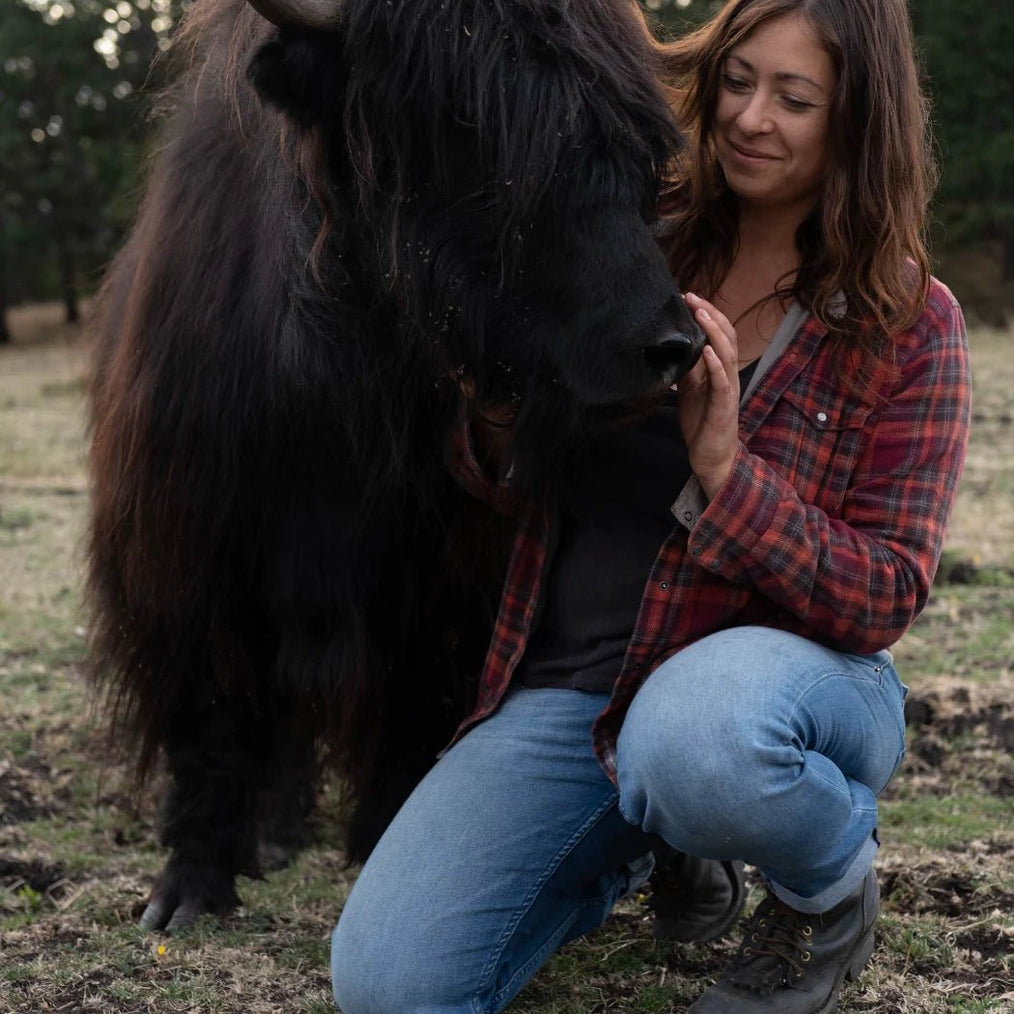As a subsistence species, yaks come in a variety of phenotypes. In Asia, they have historically not been bred for any specific purpose like we are accustomed to in North America with domestic livestock. Beef cattle breeds, for example, have been bred to produce good carcass yields and mature quickly. Dairy cows were bred to produce large quantities of milk. There are nuances of each breed for quality and type of output, but they are all bred for specific purposes.
People in the Tibetan Plateau have used yaks for centuries to sustain life in the Himalayas. They transport goods to remote regions, provide meat, dairy and fiber. They are a true multi-purpose animal. But those who raise them did not select for certain traits, so they vary from one individual to another, and between regions. This is still true to a large degree for yaks in North America. Yaks can be a plain, low fiber animal with a more “horse-like” long face and thinner legs at greater forward angles. They can have shorter, blocky heads and be thick and round, with shorter or longer backs, and straighter rear legs. They can have more guard hair, also called “hairy forehead yak” in Asia.
Here in the US, these high exterior hair yaks can range from “wooly”, to “super wooly”, to “extreme wooly”. Fiber quality and production, milk production and meat carcass weights all vary between individuals and genetic populations. Temperaments in yaks range widely, just like people. The best results with raising yaks are attained when the right yaks are selected in the first place, and we work hard to match yaks to prospective homes for successful ongoing relationships. For meat herds and low-interaction herds, they don’t need to be tame, but level-headed and docile are still valuable traits for safety and enjoyment of raising them. Depending on your needs and goals with yaks, these are important considerations when purchasing stock.
Because yaks are not uniform and vary greatly, it is important to understand what you like, need, and are looking for in your future yaks. Optimal qualities of each of these potential outputs is not often found in one animal. If you view yaks as a herd, they produce these outputs, but each individual may not be a high fiber producer, be a large bodied meat producer, and have a high amount of milk production.
MEAT - If you are a potential meat producer, you will want large-framed animals with genetics for productivity of offspring and good carcass weights.
FIBER - If you are a future fiber producer, you will want yaks that have a designated fiber type, quality and amount of production, depending on your goals.
MILK - If you are looking for a milk yak, you will want one with good genetics for milk production and an excellent temperament for raising them to milk.
PETS & PACKING - If you want to work closely with your yaks, they must have temperaments that lend themselves well to work with humans and are enjoyable.
ALL PURPOSE - If you want everything in one yak, temperament, size, fiber and milk production, that is a very special yak and expect to invest more capital per animal.



